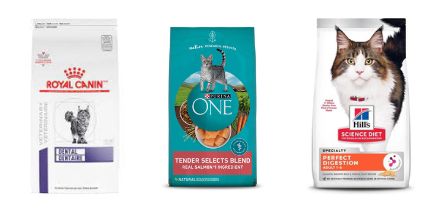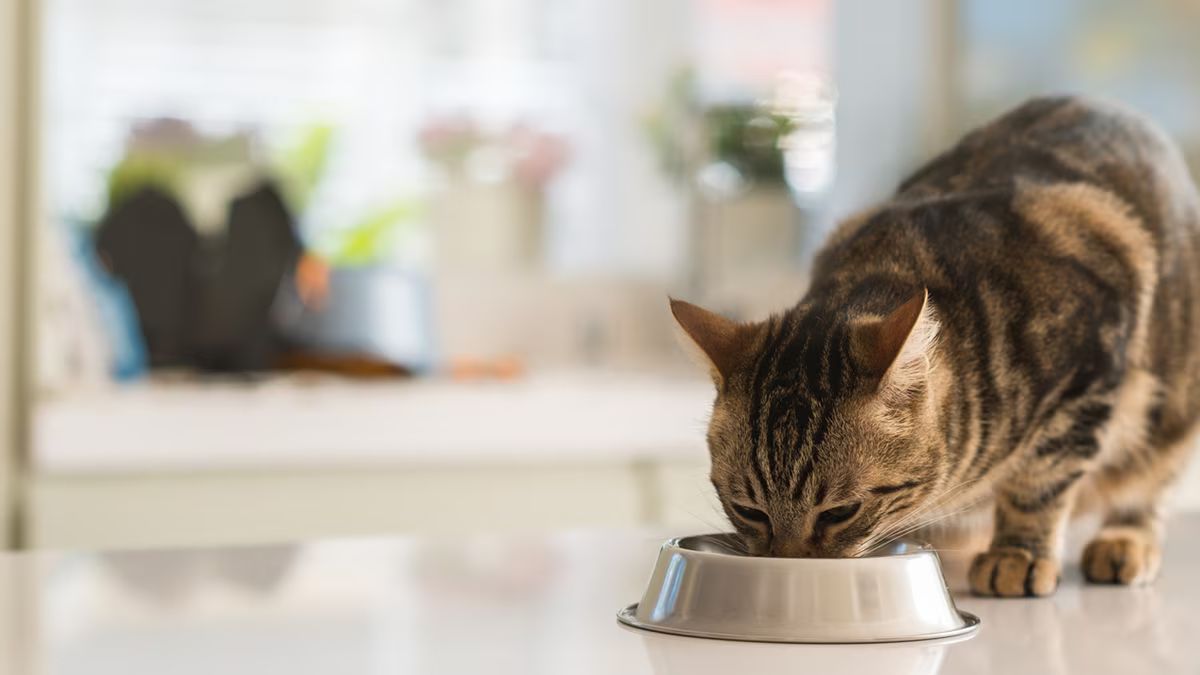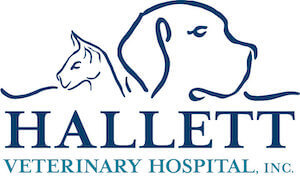Pros And Cons Of Different Types Of Cat Food
Feline nutrition is very important for general health. However, the plethora of dietary options, brands, and formulas available to consumers can be confusing when deciding which kind of cat food is best for your feline friend’s health and wellness. High-quality cat foods are formulated with feline nutrition requirements in mind. We recommend brands that have gone through AAFCO approved diet trials such as Royal Canin, Purina One, and Science Diet. We also believe that nutrition has a role in preventing problems such as obesity and dental disease.
Cats are unique in their attachment to specific textures of their food, and it can be difficult to get them to accept/change to other forms of food if they aren't used to it. For this reason, we recommend that you try to feed kittens a mix of canned and dry with the hope that they will always accept both.
We do not recommend raw food or BARF (Biologically Appropriate Raw Food or Bones and Raw Food) diets. They can expose pets and their people to Salmonella and E. coli which can be life threatening in some cases, and they are often not balanced in proper nutrients for optimal health. Raw food diets are not regulated by AAFCO and do not participate in food trials. For these reasons, we recommend commercial, balanced diets as mentioned above.
We also don't recommend all-life-stage diets because they have to be formulated to cover growth in order to carry an all-life-stage label. Therefore, they are higher in calories, and can lead to weight gain in adult pets. Similarly, free-choice feeding where food is left out all day can lead to increased calorie intake and excessive weight gain. We recommend feeding measured meals twice daily. Feeding meals or portions of meals in food toys is a great way to provide environmental enrichment for indoor cats.
Kitten Food
Kitten food is balanced for growth and is recommended to be fed until 1 year of age.
For the first month of a cat’s life, kitten food comes in the form of mother’s milk, and/or commercial milk replacer formula given every 2-4 hours if the kitten has been separated from its mother. Once this initial period passes, kitten food can become a dietary staple in the following stages, amounts, and frequency:
From 3-5 weeks of age, feeding kittens involves offering the milk-replacer formula in a shallow dish to encourage weaning from a bottle. You can also add a moist, easily chewable diet consisting of a mixture of warm milk-replacer and high quality canned or dried kitten food 4-6 times a day.
By 5-8 weeks of age, your kitten should be able to chew its own kitten food with feedings taking place 3-4 times daily. Remember to offer a combination of canned and dry kitten foods. After 6 months of age, kittens can be fed 2 times per day.
Adult Cat Food
We recommend high quality brands formulated for adult cats.
Dry food is convenient and a good choice for busy households. Some premium food brands have developed specialty, prescription formula dry cat foods which can help cats with allergies, certain health conditions, and as part of a diet also containing canned food.
Canned cat food has a higher water content which can aid in urinary health in cats that are predisposed to certain urinary conditions.
Senior Cat Food
Beginning around 7 years of age, cats begin transitioning from adulthood to the mature/senior stages of life. This transition causes health and lifestyle changes with a cat’s:
- Weight
- Joints
- Teeth
- Internal organs
If your cat is doing well on his current diet, then there may be no need to change to a different formula. Some brands make a Senior cat food  which is specially formulated to deliver ingredients that are more easily digested than standard adult cat foods. Senior cats are more likely to develop health issues related to intestines and kidney disease. There are diets specifically formulated to benefit cats with these issues which can help manage these conditions.
which is specially formulated to deliver ingredients that are more easily digested than standard adult cat foods. Senior cats are more likely to develop health issues related to intestines and kidney disease. There are diets specifically formulated to benefit cats with these issues which can help manage these conditions.
Your veterinarian can help you choose the best cat food for your senior cat by taking pre-existing medical conditions, current health status and overall lifestyle (indoor, outdoor, sedentary, active, etc.) into account.
Understanding Feline Nutritional Requirements
Cats, like all living creatures, require six classes of nutrients:
Water: The single most important nutrient for sustaining healthy cell and overall body function. Cats lose water through their:
- Lungs
- Skin
- Urine
- Milk
- Feces
Cats can receive the majority of the water in their diets through the consumption of food. Canned cat foods can contain up to 80% of this feline nutrition requirement per serving. Fresh water should always be available for cats.
Protein: Protein is a fundamental component of feline nutrition that is necessary for the maintenance and support of a cat’s:
- Muscle
- Bone
- Ligaments
- Tendons
Additionally, many of a cat’s functional body components are made of proteins, including:
- Enzymes
- Plasma proteins
- Hormones
- Neurotransmitters
Proteins have their own digestibility profile. Some proteins, like fish and chicken, are more available for use in the body than other proteins like dairy. Digestibility refers to the net amount of protein that is left after the cat food’s chemical breakdown in the body. Proteins also contain essential amino acids.
Essential fatty acids: Essential Fatty Acids, also known simply as fats, provide the most concentrated source of energy of any feline nutrition requirement. In cats, fats provide energy and carry fat-soluble vitamins: D, E, A, and K.
Fats also supply linoleic and arachidonic acids (omega-6 fatty acids) and omega-3 fatty acids, which are essential for overall health. Omega-3 fatty acids, EPA and DHA, are best supplied through a fish oil source. Cats will not be able to utilize them from a plant source such as flax seed.
Vitamins: Vitamins are organic substances (made by plants or animals) that are very important feline nutrition components because they help regulate various body processes, including:
- Boosting immunity
- Support growth and development
- Help cells and organs properly function
There are two types of vitamins, fat-soluble and water-soluble.  We mentioned fat-soluble vitamins above, but the difference between them is:
We mentioned fat-soluble vitamins above, but the difference between them is:
Fat-soluble vitamins are processed and can be stored in fat cells. They are generally more sustained release than water-soluble vitamins, and also have acute toxicity levels.
Water-soluble vitamins must dissolve in water before the body can use them. They cannot be stored and therefore must be replenished with greater frequency than fat-soluble vitamins.
The water-soluble vitamins are:
- The B Vitamins: Thiamine, Riboflavin, Pyridoxine, Pantothenic Acid, Niacin, B-12
- Vitamin C
A high quality, balanced, cat food diet fulfills vitamin requirements. Dry and canned cat foods meeting AAFCO standards have synthetic vitamins added to create a balanced diet.
Minerals: Minerals are inorganic substances that are produced in soil or water, and that are consumed by plants or animals to regulate:
- Acid-base balance
- Tissue structure
- Enzymes
Some of the minerals needed to help facilitate healthy body functioning include:
- Calcium
- Phosphorus
- Sodium
- Potassium
- Magnesium
- Iron
- Copper
- Zinc
- Iodine
The overall balance of a cat’s diet is affected not only by the levels of each individual mineral but also by the interactions between them. If choosing to feed a homemade diet, we recommend having it balanced by a veterinary nutritionist.
Schedule A Cat Nutrition Consultation
Make an appointment today and let one of our veterinarians help you make the right nutritional choices for your cat.
